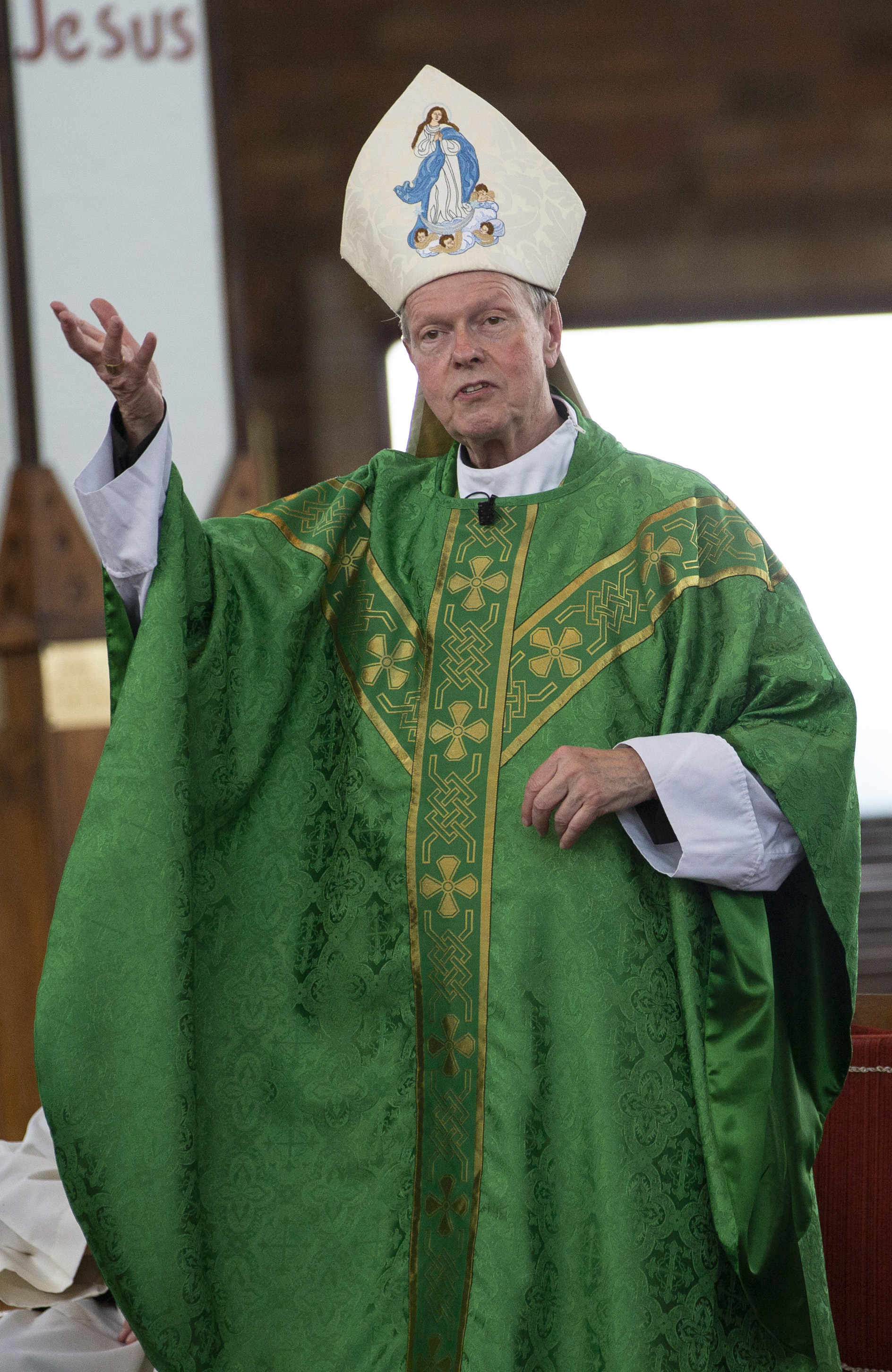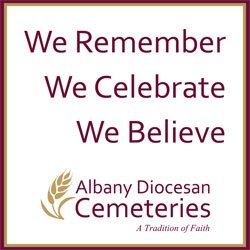August 15, 2018 at 4:20 p.m.
Diocesan Catholic schools unleash creative thinking with new strategic plan
Within a few years, Catholic education in the Albany Diocese will look very different.
The diocesan Catholic Schools Office just released “Answering the Call: Imagine, Evangelize, Transform,” a strategic plan for all 22 elementary and secondary schools. The plan includes priorities for the schools through the year 2021.
On the list are ambitious ideas to increase enrollment, market the schools, stabilize their finances, offer incentives with an eye toward teacher retention, share resources and provide better resources and access through transportation and financial aid.
Superintendent Giovanni Virgiglio and Rev. Robert Longobucco, diocesan vicar for Catholic faith formation and education, cited the need to create a mindset not focused on surviving, but on thriving.
“Education is changing so fast; our Church is changing so fast. We don’t want to be reactive,” but proactive, Father Longobucco remarked.
Best-kept secret
To some extent, the Catholic schools of the Diocese have already been bucking a national trend. While enrollment across the country has declined by about seven percent, Mr. Virgiglio said, local schools are only at a loss of three to four percent. Pre-kindergarten and high school enrollment are actually on the rise in the Diocese.
But an accreditation process for diocesan schools, completed in 2016 by the Georgia-based non-profit AdvancED, pointed to areas where the schools could do a better job of promoting themselves.
Mr. Virgiglio said the AdvancED auditors called Catholic schools the “best-kept secret” in the Diocese and advised staff to “tell the good news of what’s going on in our schools.”
The strategic plan cites several examples of positive news: The class of 2017 from the four diocesan high schools received more than $26 million in scholarship awards, and 97 percent of the graduates pursued a college degree. In addition, teachers often cite their preference for teaching in Catholic schools, though salaries can’t meet what a public school may offer.
What to do
Priorities listed in “Answering the Call” intend to build on the Catholic schools’ strengths. The priorities include:
• raising $10 million over the next five years;
• addressing schools’ past debts;
• providing financial incentives to teachers;
• focusing on student recruitment;
• offering student incentives like more scholarships, mentoring and internships;
• reducing operational costs;
• sharing other resources, including marketing experts to promote the schools;
• reimagining “the definition of Catholic schooling” to include faith formation programs, campus ministry, homeschooling and other aspects of education; and
• holding a Summit on Catholic Education.
One idea in the strategic plan is the formation of “transportation corridors,” meaning that students can be bused from beyond the usual 20-mile limit to attend a Catholic school. This would enable parishes without a school to connect to Catholic education in the Diocese, the officials said, so the parishes will feel like the funds they pay toward Catholic schooling serve them better.
Already, Holy Spirit School in East Greenbush and St. Thomas the Apostle School in Delmar are trying expanded transportation, and seeing good results.
“These buses are full,” Mr. Virgiglio told The Evangelist. “There are dozens of students transported to these schools on a daily basis. There is tremendous success with that model.”
Pre-K students
Another goal is an increased focus on growing pre-kindergarten enrollment and then retaining students when they transition to kindergarten. The superintendent pointed to several schools that are turning their focus to pre-K: St. Ambrose School in Latham and St. Mary's Academy in Hoosick Falls have discontinued their seventh and eighth grades, but are working on getting more pre-K students; St. Francis de Sales School in Herkimer is ending its entire elementary school program and becoming an early childhood center (see separate story).
The fact that upper grades have experienced more challenges, Mr. Virgiglio said, “speaks to the fact that we need to continue to provide for the scholarships and assistance families need” in order to send their children to Catholic schools.
Marketing or “branding” of the schools is important. Father Longobucco and Mr. Virgiglio noted that principals must be able to focus on leading their school communities, rather than being burdened with the task of fundraising.
To that end, schools will share marketing experts who can pinpoint each school’s uniqueness and value and get the word out about it. Social media and outreach to alumni will be part of that effort.
Resolving past debt is a burden for Catholic schools. The strategic plan calls for schools to work with the Diocesan Investment Loan Trust Fund to find fair payment schedules that replenish the fund without adding untenable debt to the schools’ responsibilities. The schools will also review their budgets and think about how to reduce major expenses.
Sharing is good
One way to do that may be sharing resources. Mr. Virgiglio pointed to the example of the four diocesan high schools, which pooled funds to hire two accounting associates who are able to serve all four schools. A new grant (see sidebar) will also provide shared counseling services for students.
Teachers can expect to see incentives like mentoring, loan forgiveness, reduced fees for continuing education courses, professional growth and even low-cost housing options. Mr. Virgiglio said the Diocese will be thinking creatively: “A school might have an adjacent rectory that’s not being used; could that be turned into affordable housing for teachers?”
Implementation of the strategic plan is already underway. A subcommittee of the Diocesan School Board has been formed to address each aspect of the plan.
Though “Answering the Call” does note that “schools that cannot achieve sustainability shall look toward consolidation or expansion of transportation services as a means to maintain students’ access to Catholic education,” Father Longobucco and Mr. Virgiglio said all of the Diocese’s Catholic schools are on board with the goals.
The accreditation process got principals and teachers “primed” for these kinds of changes, said Mr. Virgiglio: “Leadership within our schools recognize that they need to start thinking creatively about what Catholic education will look like” going forward.
Father Longobucco noted the difference between a “maintenance Church” and an “evangelizing Church.”
When it comes to the Diocese’s Catholic schools, “we’re not going to have a ‘bunker mentality,’” he said. “This is a time to grow and imagine and evangelize.”
- Pope’s prayer for September: Respecting, protecting God’s creation
- Faithful seek ways to bring healing, mental health support to Minneapolis shooting survivors
- From Final Four fame to 106: Sister Jean still cheering Loyola on
- Pope prays for victims, rescue workers in Sudan after landslide
- Pope says true charity lovingly offers help, expects nothing in return
- Norway: Bishops ‘troubled’ by growing support for euthanasia
- Pope to his Augustinian confreres: Listen, be humble, promote unity
- After meeting, Jesuit says pope welcomes LGBTQ Catholics
- Pope’s liturgical calendar features many public celebrations in October
- English archbishop warns legalizing assisted suicide could close church-run hospices








Comments:
You must login to comment.